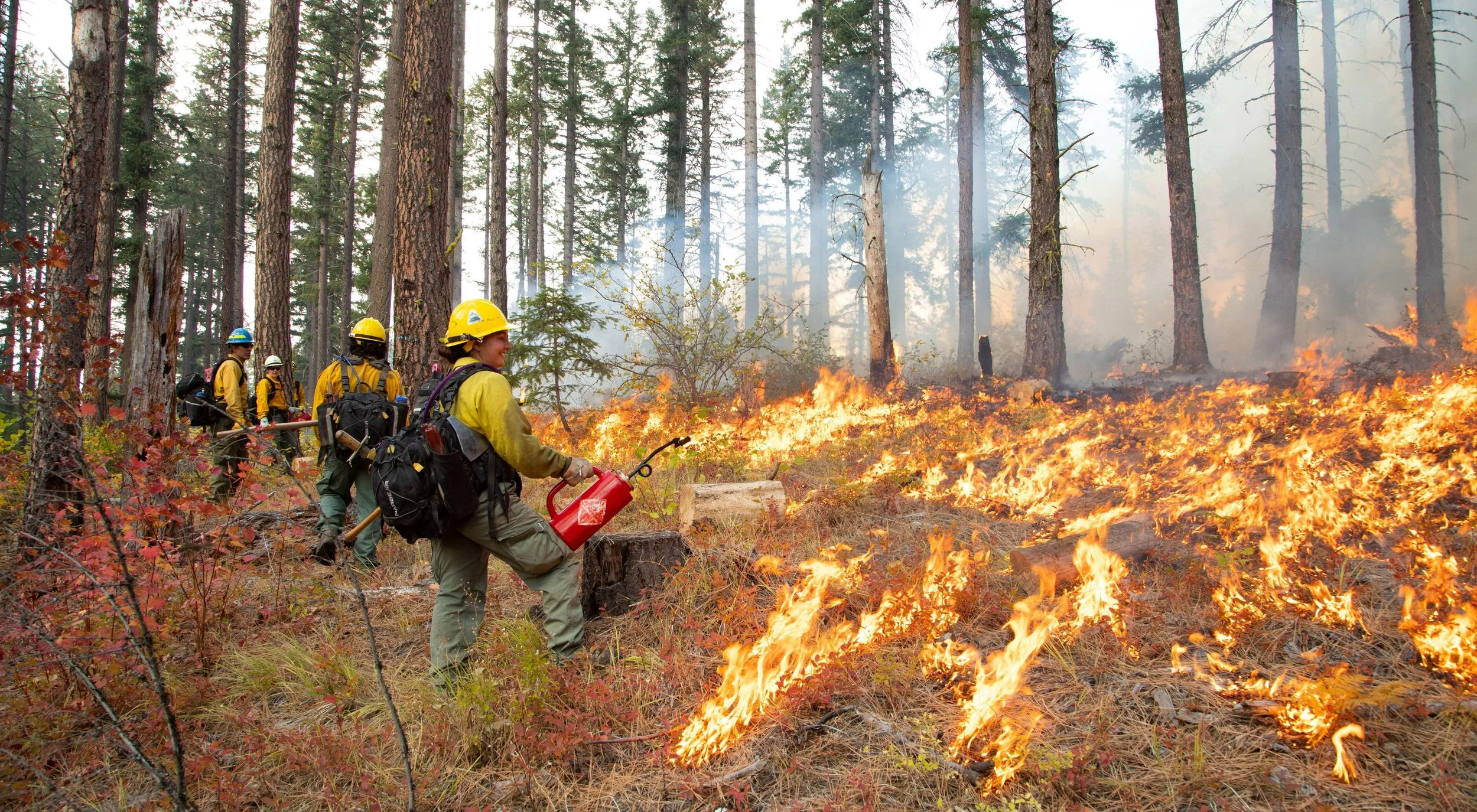Fire and Lemonade
By Maurice Robinette
On August 18, 2023, the Grey Road Fire started about three miles northwest of my place. When it was finally stopped the next day, it had burned 11,000 acres and destroyed 250 structures, most of them family homes. From 3 pm until midnight, the winds were from the west; given that and the distance, I was not concerned about it. However, by 9 pm, we were told to evacuate. At midnight, the wind shifted and came from the north. This was after the fire had jumped I-90. Eight hours later, half of the ranch was burned.
My cows were in a large, still-green subirrigated meadow, and I was not worried about their safety. Later, I learned that a neighboring rancher had moved his cows and mine out of harm’s way around 2 a.m. I lost ten acres of the meadow, which was about a month's worth of grazing. Many trees were burned and later logged for salvage.
The exact ignition point was next to a wheat stubble field that had just been harvested. It went very fast and spread into a wide front when it got close to Medical Lake. That wheat field has burned four times since 1990, but it never got out of control thanks to quick-acting wheat farmers who had their cultivators hitched. Not so this time. Once it got into the trees, there weren't enough firetrucks to get ahead of it. Then it got into town, and burning homes became their own fuel source, spreading rapidly from house to house. When it re-entered the trees, it jumped across Silver Lake, then over I-90 and the freeway. A swift response by a neighboring wheat farmer kept it out of the stubble and prevented it from reaching Cheney.
How did this happen, and why was it so damaging? I’ve grown up here and witnessed a few big fires, but nothing on this scale. The conditions were extreme, with several days over 90 degrees, single-digit humidity, and 35 mph winds. We’ve faced severe conditions before. My best guess for why it was so damaging is bad luck in a bad place.
In the year since I’ve looked into lots of strategies on what to do next. I’ve concluded that only three things can protect a building: First, make it from fireproof materials, such as concrete and steel. Second, have a suppression system in place that will prevent the building from ignition. These have become common in Australia and are basically a rooftop sprinkler system. Third, have a firetruck parked nearby. As many homes were lost, many more were saved because there was a fire truck present.
The biggest revelation was the need to fight fire with fire. Prescribed burning is one of the best tools for creating a resilient ecosystem that can endure large fires. Historians tell us that Indigenous peoples routinely burned this area of eastern Washington for thousands of years, and the ecosystem is adapted to that practice. Prescribed burning can make wildfires less intense and accelerate recovery.
Prescribed Burn Associations (PBAs) help landowners and other community members conduct prescribed burns by creating a network of local burners, pooling resources, equipment, and people, and providing essential training and education.
PBAs are partnerships among landowners, community members, and other interested stakeholders to carry out prescribed burns. They function like a community organization where neighbors help neighbors, uniting their resources, knowledge, and efforts to effectively implement prescribed burns that would be challenging for an individual to manage alone.
PBAs provide training, educational equipment, personnel, and technical assistance to promote safe and effective prescribed burning. This lowers costs by pooling resources and enhancing knowledge and experience with prescribed fire. It’s all about reciprocity, cooperation, and support among the members.
The outcomes of prescribed burns near Cle Elum are impressive. Ladder fuels have been removed, and the fuel density is quite low. Trees are spaced apart to prevent crowning during a fire. If a fire occurs again, it is unlikely to cause significant damage. In our area, Ponderosa pines possess a layer of bark that is fire-resistant to a certain extent. However, large trees can perish when temperatures rise too high due to ladder fuels.
Before a prescribed burn on private land, there is extensive preparation, which involves thinning, creating fire breaks, and establishing fire trails for equipment. During the burn, numerous fire trucks and personnel are present, and the weather conditions must be optimal. Great care is taken to control the burn, and no burn in Washington has ever gotten out of control. This is due to the exceptional diligence in preparation and oversight by fire professionals.
What about the cost? It’s not cheap, but more and more funding sources are becoming available because more people recognize the long-term impact of a proven technique. Had the area around Lakeland Village been burned regularly, there would have been a better chance of keeping it out of Medical Lake. If the area adjacent to Medical Lake had been burned on a regular basis, the fire might not have jumped the lake or the freeway. Lots of ifs, but I’m reminded of an old Fram oil filter commercial: “Pay me now or pay me later.” Estimates for rebuilding Medical Lake range from $250 million to $ 1 billion.

